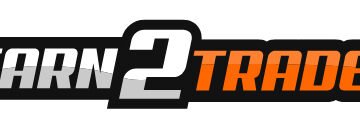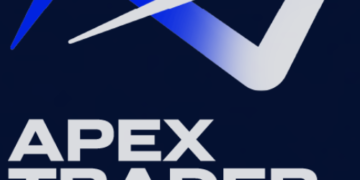What is Volume Profile?
Volume Profile is a powerful trading tool used by futures day traders to analyze market activity at different price levels. Unlike traditional volume indicators that only measure the total volume per time period, Volume Profile provides a detailed view of where the most trading activity occurs on the price chart. This allows traders to identify key support and resistance levels, high-probability trade setups, and areas where institutional traders may be placing large orders.
Why is Volume Profile Important for Futures Trading?
For futures traders—especially those trading the E-mini S&P 500 (ES), Nasdaq (NQ), crude oil, and gold futures—Volume Profile offers a deeper understanding of market behavior. Since the futures market is driven by order flow and liquidity, knowing where the highest concentration of trades occur helps traders make better-informed decisions. Volume Profile is especially useful for:
- Identifying high liquidity zones where large institutions execute trades
- Spotting support and resistance levels based on volume distribution
- Recognizing breakout and reversal opportunities
- Understanding market sentiment and order flow dynamics
Key Components of Volume Profile
1. Point of Control (POC)
The Point of Control (POC) represents the price level with the highest traded volume. It acts as a magnet for price action, often serving as a strong support or resistance level.
2. Value Area (VA)
The Value Area is the price range where approximately 70% of the total volume has traded. This area is crucial because it reflects where market participants perceive fair value.
3. High Volume Nodes (HVN)
High Volume Nodes are price levels with significant trading activity. These zones often act as strong support and resistance levels.
4. Low Volume Nodes (LVN)
Low Volume Nodes are price levels where little trading activity has occurred. Price tends to move quickly through these areas, making them ideal for breakout trades.
How to Use Volume Profile in Your Trading Strategy
1. Identifying Support and Resistance Levels
By analyzing the Volume Profile, traders can pinpoint strong areas of support and resistance based on past trading activity. If price approaches a high-volume area, it is likely to find support or resistance at that level.
2. Trading Breakouts from Low Volume Areas
Since price moves quickly through Low Volume Nodes (LVNs) due to a lack of market interest, traders can look for breakout opportunities when price enters these zones. This is particularly useful when trading momentum strategies in futures markets like the ES and NQ.
3. Using POC as a Key Decision Level
The Point of Control (POC) acts as a critical price level. If price is above the POC, it indicates bullish sentiment, while price below the POC signals bearish sentiment. Traders can use this information to determine whether to go long or short.
Volume Profile vs. Market Profile: What’s the Difference?
While both Volume Profile and Market Profile provide insights into price action, they have key differences:
- Volume Profile focuses on traded volume at price levels.
- Market Profile organizes price action based on time-based distribution.
For futures traders, Volume Profile is often preferred because it directly reflects where large market participants are placing orders.
Get Started with Prop Trading – Exclusive 80% Discount!
If you’re looking to trade futures with a funded prop firm, you need a firm that offers cheap futures prop firm evaluations and great discounts. Apex Trader Funding is currently offering a LIFETIME 80% OFF all evaluations!
🔥 Apex Trader Funding – Best Prop Firm for Beginners 🔥
✅ 80% OFF all evaluations & future months
✅ Pass in just 1 day!
✅ $40 resets for all evaluations
✅ Only $125 one-time PA activation fee
✅ 250K & 300K accounts for just $33.40
✅ Take up to 20 funded accounts
✅ Over $433 MILLION paid out to traders!
🔹 Use Code: VTFGKPGN at checkout 🔹 OR Click Here: Get Your 80% Discount Now
Final Thoughts
Volume Profile is an essential tool for any futures trader looking to improve their market analysis. By understanding volume distribution, traders can identify high-probability trade setups and improve their execution. Whether you’re scalping ES, NQ, crude oil, or gold futures, mastering Volume Profile can give you a competitive edge.
For those looking to get started with a prop trading firm at a discount, don’t miss out on Apex Trader Funding’s 80% OFF lifetime discount. Save now and start trading with a funded account today!

⚠️ Disclaimer ⚠️
This content is provided for informational purposes only. Authors and contributors on our site are not certified or registered financial advisors. Before making any financial decisions, you should consult a financial professional. The discount codes and prop firm deals listed on this website are for informational purposes only. Before using any prop firm, please conduct your own research and due diligence. We do not endorse or guarantee any specific firm, and we are not responsible for any financial losses, disputes, or issues that may arise.
By using any discount code or signing up with a prop firm, you acknowledge that you are making an independent decision at your own risk. Please review each firm’s terms, conditions, and policies carefully before proceeding.
Risk Disclaimer:
Trading futures and other financial instruments involves substantial risk and is not suitable for all investors. There are no guarantees of profit, and traders should be prepared for the possibility of significant losses, including amounts exceeding their initial investment. This website provides educational content only and does not offer financial, investment, or trading advice. Past performance is not indicative of future results. Before engaging in trading, carefully consider your financial situation, experience level, and risk tolerance. If necessary, consult with a licensed financial professional.
Trade responsibly!
Apex Trader Funding, day trading, evaluation accounts, futures trading, prop accounts, prop evaluation discounts, scalping, Take Profit Trader, trading tips, volumeprofile






No Comments
Leave Comment